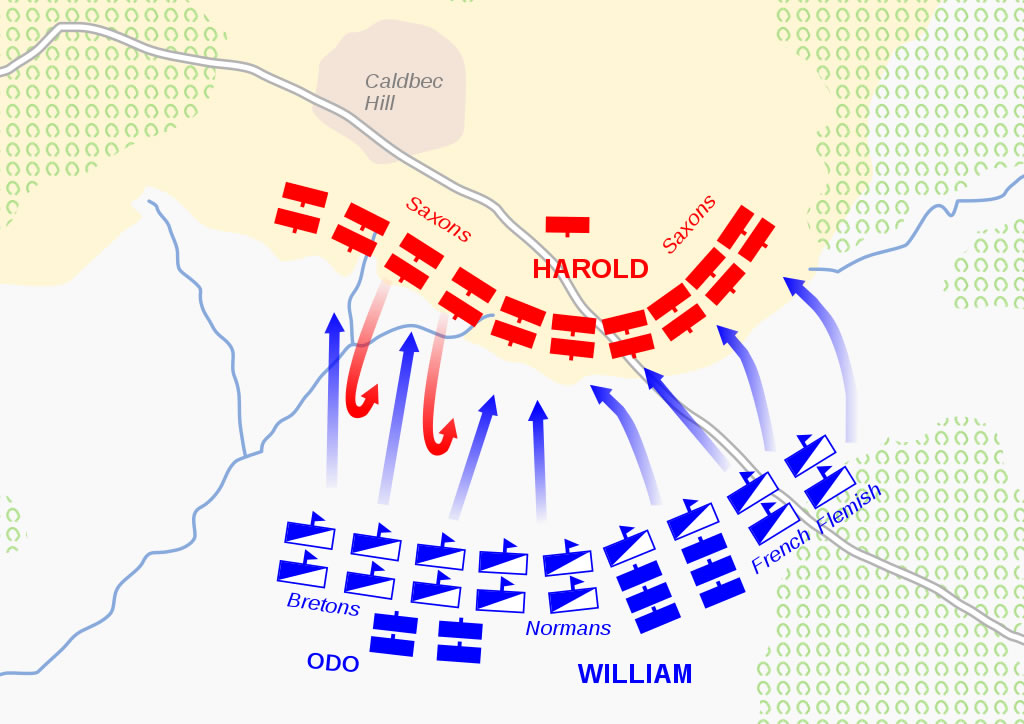William I
Battle of Hastings

On 14 October the Anglo-Saxon army took up a position on a small hill near the edge of a great forest known as the Weald. Those using hindsight say Harold should not have offered battle so soon, for many men were still on their way to join his army. Duke William’s army, marching north from Hastings, came upon the Anglo-Saxon shield-wall in the morning. There was no time lost in starting the battle.
By 12 o’clock there would be dead and dying men on both sides. Then, according to one account, the Norman army ceased to attack. Instead, the combatants broke for lunch! Men could be seen around fires, resting, eating and drinking. Imagine the impact this would have on the Anglo-Saxons: they would have had little or no time to gather together provisions. In contrast, the Normans had drawn food from all the surrounding area. After a break, during which they had rested and eaten a meal, the Normans renewed the attack against the hungry and dispirited Anglo-Saxons.
If the Anglo-Saxon army could hold the shield-wall until daylight faded then the day would be theirs. More men would arrive during the night. What remained of the army, plus the reinforcements, could crush the Normans the next morning. But the attacks on the shield-wall were relentless and it eventually broke. Perhaps before this happened or maybe later, King Harold was struck in the eye by an arrow. This might not have killed him but the weapons of the men who burst through the wall certainly did. The whole of the Norman army now came together – hacking, thrusting and wielding weapons upon the Anglo-Saxons. Harold and soon his brothers lay dead. What remained of the Anglo-Saxon army withdrew into woods that had protected their rear. Duke William and his army were the victors.
Disposal of Harold’s body
Harold’s body had been so badly mutilated that it could only be identified by certain marks known to his wife. His mother was willing to pay the same weight in gold for his body. Her offer was refused. The last thing the conquerors wanted was for the burial place of Harold to become a shrine and focal point for the Anglo-Saxons. William Malet, a trusted Norman baron from Pays de Caux, was given the task of disposing of Harold’s body somewhere on the seashore. Some time later the body was transferred to Waltham Abbey, which had been founded by King Harold.

